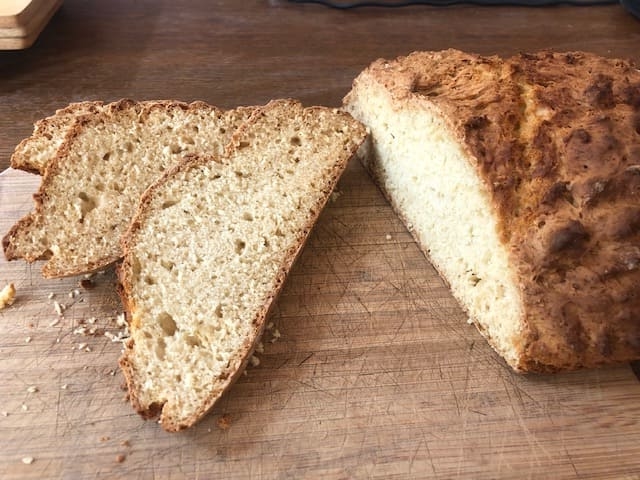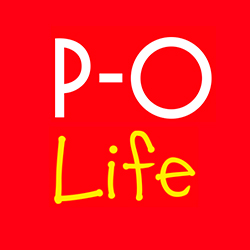Soda bread is the easiest bread you can make as it doesn’t require kneading or proving. You can knock up a loaf in minutes and have warm bread on the table in less than 45 minutes.
The science
The raising agent in soda bread is bicarbonate of soda (bicarbonate de soude in French) which is easily available in the baking section of French supermarkets. The bicarbonate of soda needs an acid to make it work so you can use buttermilk (babeurre) or yoghurt.
If you can’t get hold of buttermilk it is very easy to make your own version by adding 1 tablespoon of either lemon juice or vinegar to 250ml milk, stirring and leaving for five minutes. The acid curdles the milk. This saves a trip to the shop (probably fruitless as few places sell it!) and means that you can avoid waste by making the exact quantity you need rather than having a leftover carton of buttermilk going off in the fridge. The bicarbonate of soda reacts with the lactic acid to release carbon dioxide bubbles which make the dough rise.
Ingredients
500g plain flour (farine de blé)
1 teaspoon salt
1 teaspoon bicarbonate of soda
400ml milk
2 tablespoons lemon juice
Method
♥ Turn the oven on to 200˚C.
♥ Add the lemon juice to the milk, whisk together and leave for five minutes.
♥ Sieve the flour, salt and bicarbonate of soda into a large bowl.
♥ Add the liquid to the dry ingredients and mix together to form a sticky dough.
♥ Turn out on to a clean work surface and fold the dough together until you have a homogenous mix.
♥ Shape into a large flattened circle and place on a baking tray lined with greaseproof paper.
♥ Cut a cross in the top with a sharp knife. If you oil the knife first it will stop dough from sticking to it. ( This tip also works if you’re measuring out honey or syrup with a spoon)
♥ Bake in the oven for 25-30 minutes until golden brown.
Yes, it really is that simple and tastes delicious.
Next, why not try sourdough?
Sourdough bread is another bread which is leavened without using commercial baker’s yeast although it’s a trickier process than soda bread. It involves making a sourdough starter which requires patience – it takes around 10 days to get going – and needs to be fed before use. It produces a more complex flavour and makes for a more interesting loaf.
Regular foodie contributor to the site, Hilary Cacchio, has written a whole book about sourdough. She says:
‘A wild yeast/sourdough culture consists of different wild yeasts and bacteria (no culture is the same). It is how bread was made for thousands of years (so it can’t be that difficult!). The culture, when added to flour, liquid & salt, produces a naturally fermented bread which does not HAVE to be sour, but can be if you choose. It is easy to capture one and simple to maintain and, like life, offers an abundance of joy, learning and adventure, not to mention REAL bread. IIf you plan to introduce one into your life, it is useful to understand the seven stages of basic bread making. Then all you have to do is to capture your culture and understand how it fits into these stages.’
The seven stages are explained in Hilary’s book, Sourdough Suppers: A Year in the Life of a Wild Yeast Culture, which is a great introduction to those wishing to take their breadmaking to the next level. It is downloadable on Amazon here:


